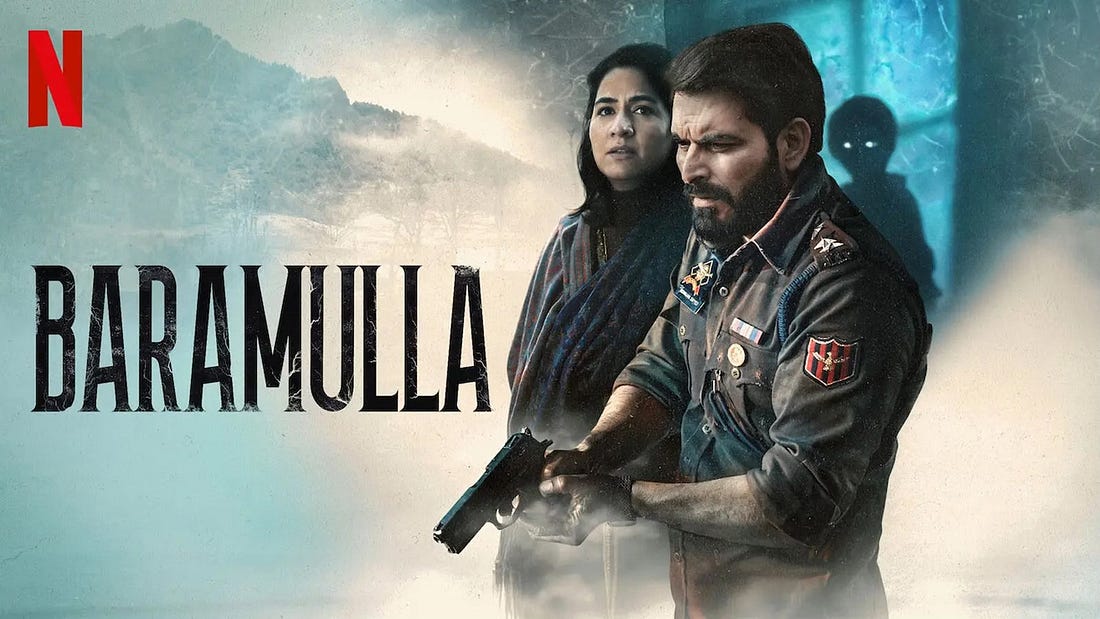I have always avoided movies due to the heavy histrionics of Indian cinema, over-the-top humour that doesn’t land, and a distaste for the tropes of mass-media storytelling. Baramulla is a rare movie that excited me because it demonstrates how truth and nuance can elevate Indian cinema—breaking away from typical tropes to offer artistic depth. The Netflix movie Baramulla has evoked an intensely personal reaction from almost everyone who watched it. Much has already been written about it in the three days since its release. This review examines Baramulla not as a debate on Kashmir, nor from the perspective of Hindu Parenting, but as a powerful example of Indian Aesthetics. My aim is to show how the movie’s artistry embodies Alankara Shastra, which I teach to children and teenagers. Students familiar with these terms will recognize them at once. For others, let’s explore a few concepts to analyze the movie. Emotions capture the audience. When you know that you like or dislike things because of the emotion it creates in you, you have reached an understanding of Rasa. Rasa, meaning ‘essence’ or ‘flavor,’ is the soul of Indian Aesthetics. According to the Alankara Shastra tradition, there are nine rasas, or emotional states, that can be evoked in a connoisseur of performing arts. If you felt mildly scared while watching the movie, it induced the Bhayanaka rasa, meaning the feeling of fear. If you felt wonderstruck at the scale and grandeur of the mountains and the misty lake, you felt the breathtaking Adbhuta rasa (wonder). If you cried with the hapless Hindu family, you were responding to the Karuna rasa (pathos). If you felt disgust at the cruelty exhibited by the militants, it was the Bhibhatsa rasa at work. If you found the story gripping and relished watching with bated breath from beginning to end, it’s because of the power of Rasa! Did you notice anything odd? No? Then the movie scored very high on Auchitya, which is loosely translated as appropriateness. Auchitya in Indian Aesthetics refers to the suitability or propriety of all elements in art. It is a finely tuned sensibility, almost like a judgment call, indicating how far to push the boundary. For a subject matter filled with pain and terror, the handling was sensitive and deft, without crossing over into inappropriateness. How do you know that? Because if there was a lack of auchitya, you would have noticed it. A lack of auchitya tends to stick out like a sore thumb. What about Vakrokti—the concept that is usually a favourite of children for the novelty and excitement that it brings to the table? Vakrokti is an idea from Alankara Shastra, meaning ‘creative or indirect expression,’ often seen as a ‘twist’ or ‘deviation from the ordinary.’ Did you love the refreshing twists in the plot? The thinking out of the box? Well, this movie is superb, as analysed from the angle of Vakrokti; those who see it will realise (can’t give away the ending as a spoiler bit). Where the movie really excels is in conveying Dhvani, the suggestive aspect. Without being preachy or nagging, it suggests creepiness with the principle of show, not tell, executed with finesse. It indicates what Kashmiri pundits endured, the pressures on police officers, and betrayal by a close playmate. Little details tease out the underlying meaning without becoming loud or overtly outraged. The music and colours enhance this subtlety without excess. Dhvani remains restrained and understated, making a deep impression on the viewer. Dhvani (suggestion) is at the heart of this film. Anandavardhana, in his path-breaking work, Dhvanyaloka, says that a great work of art is full of Dhvani. It lets the viewer join the dots and reach those pleasurable “Aha” moments. Without the immense power, of Dhvani, he maintains, a work can never be truly great! Each element, called a Guna (e.g., sound, colour, costume, lighting, dialogue), which means the quality or attribute of something, comes together to create a unified, memorable Reeti, which means a unique style identifying an artist. The gunas and the reeti, like all the other elements, help bring out the intended rasa. Baramulla stands as a masterpiece when viewed through the lens of Indian aesthetics. Through inspired storytelling, outstanding performances, and masterful use of artistic elements, it exemplifies how cinema can rise to the level of true art. For parents concerned about the movie’s intensity, modern children can handle it. Watch confidently with your family, and let it spark discussions on Hindu history and filmmaking. In conclusion, Baramulla demonstrates the power of Indian aesthetics in cinema, ending on a note of hope—just as the Natya Shastra prescribes. It is both a moving artistic experience and an example for future filmmakers. -Rekha Achyutuni is the Founder and Editor of Hindu Parenting. She writes unsigned features for Hindu Parenting, believing the cause matters more than individuals. She also teaches children the science of Indian aesthetics. Here are links to her courses: Alankara Shastra for emotional awareness and communication, and Rasa & Raga, focusing on classical art forms. Hindu Parenting is a community for Hindu parents worldwide. We carry articles, podcasts, reviews, classes for teens and various other resources to help you in your parenting journey. Subscribe to get the latest articles and podcasts in your e-mail inbox. Leave a note, DM or send email to contact@hinduparenting.org if you’d like to share your viewpoints, experiences and wisdom as Hindu parents, or if you wish to join our community! You can also follow us on X (Twitter) or Instagram. Our handle is “hinduparenting” You're currently a free subscriber to Hindu Parenting. For the full experience, upgrade your subscription. |

